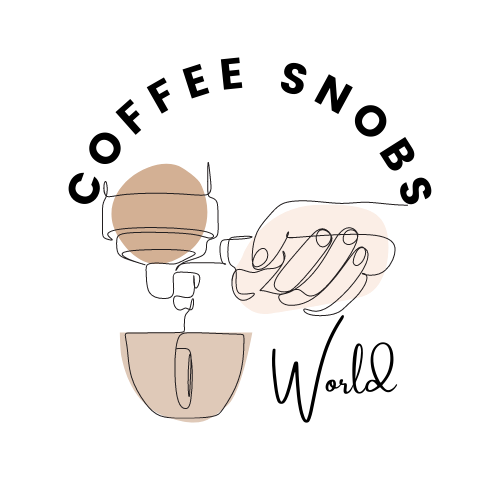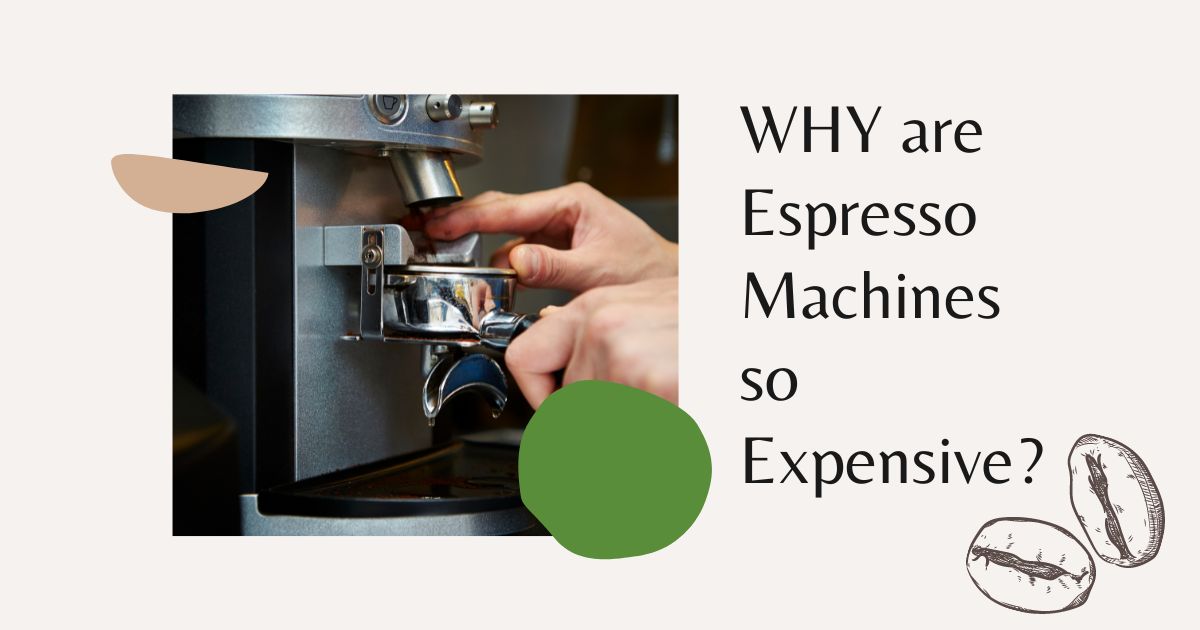The Cost of Espresso Machines
When first considering purchasing the espresso machine, it shocks many people just how expensive they are. But why are espresso machines so expensive? A cheap espresso machine costs around $300, compared to an excellent auto-drip coffee maker, which costs around $40.
You should easily budget for around $1,000 to get something a little more substantial. What makes an espresso machine expensive? Is an espresso machine special? Let’s look and learn more.
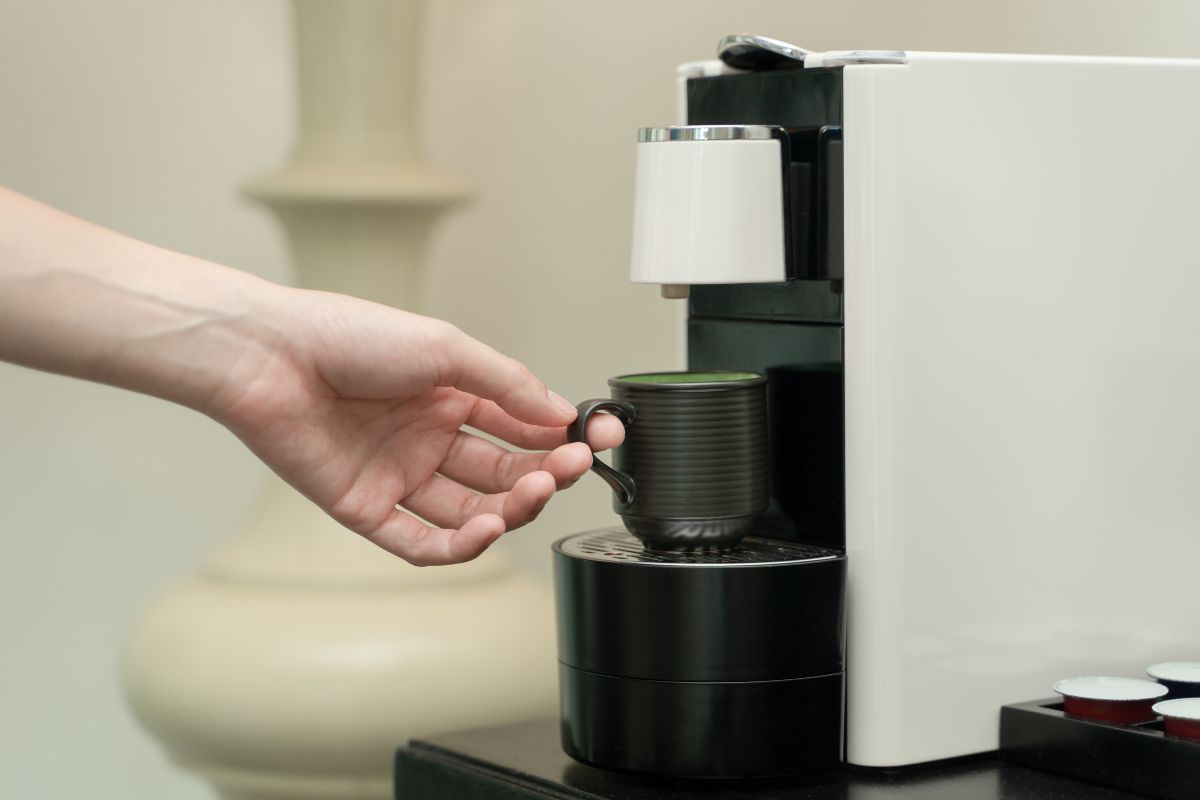
What is Espresso?
Before getting into the intricacies of the reasons why espresso machines are so expensive, we need to first talk about espresso, how to make it, and what the devices need to be able to meet the requirements. A more dense and concentrated body characterizes espresso in addition to a higher caffeine content than a traditional cup of coffee.
Compared to the eight ounces of coffee you would normally consume in a day, you would drink an ounce (28.35 grams) of espresso once at a time. This is because espresso boasts a substantially more intense flavor than regular coffee and a higher concentration of caffeine.
One component that contributes to the strength of espresso flavor is the preparation procedure you use to make the beverage. Espresso, in contrast to regular coffee, which gets its flavor from filtering through water that you heat to a certain temperature, you will produce it by pressurizing and firing nearly boiling water through coffee beans in a machine called an espresso machine.
Normal coffee gets its flavor from this process. When you force coffee grounds that have undergone processing to such a fine consistency, the coffee beans look like a cake. You grind the coffee beans to such a fine consistency.
This approach produces a beverage that is noticeably more complex and stimulating than regular coffee. It does so in a noticeably shorter period than the standard method requires.
Why are Espresso Machines so Expensive?
Parts and Materials
Espresso machines are far more difficult to manufacture than other coffee makers, which is one of the reasons they are significantly more expensive. To keep the temperature and pressure stable at all times, the boiler and pressure stat, each of which can cost up to one hundred dollars on its own, must be of the greatest possible quality.
Espresso machines extract espresso rapidly and under intense pressure forcing water through tightly packed coffee grinds. This process takes only a few seconds. Even a slight error in the pressure or the temperature will produce undesirable outcomes. Many machines also come with additional accessories like steamers, for example.
Although, on the surface, steamers serve a basic function—that of heating and steaming milk—it is rather complex to integrate them into the rest of the machine while also getting the best components. The high cost of an espresso machine is not solely attributable to the sheer volume of its parts.
The production of a good number of those components is also quite pricey. You might include a grinder, a thermoblock, multiple portafilters, and a steam wand in a single machine. The machine’s exterior, typically completed in high-quality materials like stainless steel or brushed chrome, also contributes to the overall cost of the product.
You can attribute the expense of constructing an espresso machine to the machine’s extensive component count. The consumer is responsible for bearing a portion of these expenditures.
Investment in Durability
Espresso machines produce significantly higher-quality coffee and are of higher quality overall than the vast majority of other types of coffee makers. The majority of makers of espresso machines still place a high priority on the lifetime and durability of their goods, which results in more expensive parts and machinery.
While espresso is gaining popularity among those who buy coffee in their homes, most espresso machines on the market are for the commercial coffee shop and restaurant sector. Because of the requirement for these machines to withstand years of continuous high-volume use, the manufacturers invest in high-quality parts and provide valid warranties.
There is a justifiable explanation for why espresso machines that date back several decades continue to be in great demand. It’s because they continue to work properly even after so many years.
However, for manufacturers to meet their warranty requirements and keep machines operating at such a high level of quality, they need to maintain a large inventory of replacement parts and train service experts.
The product’s total price will reflect the addition of each of these costs. Think of the espresso machine not as a piece of home equipment but as a long-term investment in the quality of the coffee you drink.
A Niche Market Without Economies of Scale
The manufacturer’s calculations contribute, at least partly, to the high price of an expensive espresso machine. Companies must be profitable regardless of whether or not they are in the coffee business because of their passion for the product.
The proprietors of restaurants and coffee shops, in addition to ardent coffee lovers, make up the majority of the consumers for high-quality espresso machines due to the nature of this product’s target market. Consequently, they typically don’t sell in very high numbers, so their manufacturers cannot obtain economies of scale.
Because of the relatively limited sales volume, the manufacturers need to set prices significantly higher than normal to meet the high overhead costs and earn a small profit for the company. However, these steep charges are necessary to fund the research and development that has improved espresso equipment.
Human Resources
Behind the scenes of the production of every high-priced espresso machine is a group of seasoned professionals working together as a team. These individuals played a significant role in the development of the machine. Most devices are still manually crafted by highly trained individuals using time-honored procedures.
The most successful companies also have highly developed research and development divisions. You ought to compensate each individual for their education and experience.
Brand Reputation
De’Longhi, Breville, La Marsca; Most likely, if you’re passionate about coffee and brewing, you are familiar with these people. Some manufacturers have earned a reputation for producing high-quality goods and beautiful machines. You will pay extra if you purchase a machine from one of the most reputable manufacturers of coffee equipment.
However, you’re not simply paying for a sticker with a well-known name on it. Because of the many years of investment in research & development, design, and quality testing, these brands have a great reputation for quality.
Any additional funds you spend on an espresso machine from a well-known brand will support the large research and development teams at that business and the salaries of seasoned personnel. Sometimes purchasing a more expensive, brand-named machine results in a higher quality.
Extra Features
If you want one with additional features, you should be ready to pay a higher price for an espresso machine, which also means more options. Depending on the particulars of your situation, the extra cost can end up being money well spent.
There are currently espresso machines on the market that come outfitted with a digital display, which makes it much less difficult to monitor the temperature, the time, and the diagnostics of the equipment.
Some machines come with more advanced controls for altering the temperature of the water, which gives you the ability to make multiple cups of coffee at once in various strengths.
You have the opportunity to continuously profile the pressure that the machine is under while you are pulling your shot on the most high-end espresso machines. This allows you to tailor the flavor of your espresso to match your preferences exactly.
Quality of Materials
Its parts determine an espresso machine’s price. The grinder, brew group or group head, portafilters, and thermoblock are all expensive.
Then there are the other parts you utilize for finishing, such as the steam wand, brushed chrome, and stainless steel. Prices will increase with the amount spent on the machine’s ingredients alone. They use high-end and pricey materials for coffee makers. These expensive espresso machines are of the highest quality, which explains why.
There is the use of low-cost components in cheaper coffee makers. They are frequently of substandard quality due to this. Although there are affordable options, some people choose to purchase pricey options. They are certainly more reasonable, but you should consider quality rather than price when purchasing a coffee maker.
What use would a cheap one serve if it had the potential to malfunction after only a week of use? Even though they are less expensive than high-quality ones, these inexpensive devices are nonetheless costly. You are not required to purchase the more pricey ones. The difference between the two may be a few bucks.
Research
The processes that these machines go through are numerous. Consumers are unaware of this reality. Because of extensive research and development, the product price rises as the production cycle lengthens. Every espresso machine is in existence.
Due to the extensive research and development that went into creating certain espresso machines, their prices might reach extremely high levels. The labor costs of the staff responsible for making the device also contribute significantly to the item’s overall cost.
If you buy a cheaper alternative and have to worry about the product exploding in your face while you are using it, then it is in your best interest to spend the extra money on this one.
Low Demand
The espresso machine is not necessarily the piece of hardware in the highest demand. The typical consumer will not spend more than around $100 on a single item for their kitchen, except for large equipment like refrigerators, ovens, and other cooking devices. Because there is less demand, there is less competition, which leads to higher prices.
This is because there are fewer options accessible due to the low demand. This is especially true for high-end espresso machines, such as those used in the commercial sector, which you will typically find in restaurants and coffee shops.
There are not very many options to consider at all. It will force you to pay the greater price since no other options are available to you and the need of the situation.
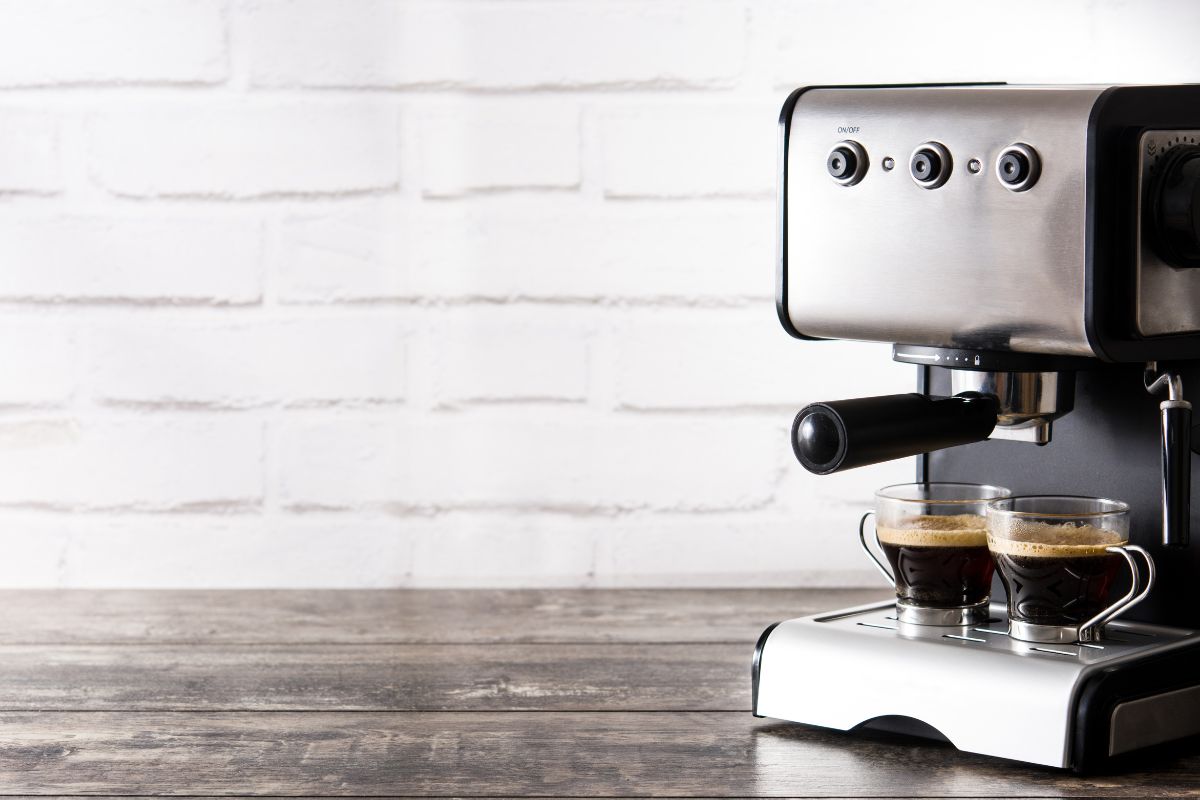
What is the Recommended Price to Pay?
How much does an espresso cost? Do you often get what you paid for? You need a lot of research and components to create an espresso machine. Those are their prices; the makers aren’t taking advantage of you. You don’t have to get the most costly espresso machine, though. For the ordinary owner or anyone, some alternatives are excessively pricey.
For around $500 or less, you should be able to get a fairly nice espresso machine. These devices are durable and provide excellent espresso. Consider somewhat more expensive models if you intend to use the machine frequently. In other words, avoid purchasing the model that is the lowest but also avoid buying the most expensive model.
Purchasing a cheap espresso maker is pointless because it will probably break and create subpar coffee. Conversely, extremely expensive machines won’t make espresso that much better and will have extra capabilities you probably won’t use.
What Makes Espresso Special?
Most likely, your experience with an espresso shot was disappointing. Or perhaps you overheard your coffee aficionado friend raving about his most recent triple ristretto. That was a “God Shot,” in his opinion. What is so wonderful about espresso, you ask? It is a valid question if you have tried it and didn’t enjoy it.
As soon as you finish reading this essay, I urge you to try an espresso if you’ve never had one. Ensure you purchase it from a reputable coffee shop; Starbucks doesn’t have the best espresso. If you’ve tried espresso and didn’t enjoy it, it likely was either not espresso or its making was improper.
Espresso is unique because it uses a special brewing technique that forces hot water under pressure through finely ground beans to extract flavors and aromas unique to espresso and not present in other coffees. The unique and potent flavor profile of the coffee produced by the specific brewing technique is well-liked.
Now that we have a better understanding of what constitutes espresso and does not, let’s examine why espresso tastes the way it does and how it differs from all other coffee varieties.
The only brewing technique that employs a high-pressure brewing process is espresso.
Thanks to the pressure, you can extract some aromatic chemicals you cannot extract using any other brewing technique. Some of these substances are volatile coffee oils, which either escape from filters or evaporate at higher temperatures. Espresso requires the least amount of time to brew. You will pull a shot for 20 to 25 seconds.
Due to the brief brew time, you will remove the tannic acids from the coffee grounds. The good news is that bitter compounds take longer to dissolve in water than sweet ones do. You extract coffee components in order. We avoid getting these into our cup by keeping it brief. If you want more geeky information, here is more on espresso extraction.
Caramelized Finish. Espresso stimulates the taste receptors at the back of your tongue because it contains emulsified coffee oils. Your coffee releases its fragrant ingredients for at least 20 minutes. You consume a shot in under a minute, yet the aftertaste lasts the longest. For espresso drinks, espresso serves as the basis.
Espresso is nearly always used to make coffee drinks in coffee shops because of its potent flavor and concentration. Steamed milk and one or two espresso shots are the primary ingredients in a macchiato, cappuccino, flat white, and latte.
Crema. The most noticeable aspect of the espresso is the crema. The crema is the most distinguishing characteristic of espresso and indicates a quality shot, even if there is some controversy as to whether it adds any flavor to the shot. You can emulsify coffee oils and water to form a crema.
This emulsion is the crema or foamy layer of coffee on top of the espresso shot. I adore crema, and I believe it gives the shot its distinct flavor. Espresso is a concentrated coffee that is not tannic acid-dominated. Coffee brewed to the same strength tastes awful.
The likelihood of extracting unwanted chemicals and imparting bitterness to the coffee increases with the time you expose your coffee to hot water.
Grind Size – Turkish coffee is the only other fine grind size. Due to the quick brewing time, we can afford to grind more finely and prevent over-extraction. The fine grind size increases the extraction yield without extracting tannins.
The smallest volume of coffee beverages. It is the smallest serving size, along with Turkish coffee. The appeal is partially due to the serving size, which packs more taste into a tiny liquid.
Are Espresso Machines Worth the Money?
Is purchasing inexpensive espresso machines worthwhile? When you are on a tight budget and tempted to save on an espresso maker, you may go for one of the two things:
- Continue to save.
- Purchase a standard coffee maker.
You can purchase many high-quality espresso machines that would endure for years with the money people spend on cheap equipment that malfunctions after a year. Why waste your money on a subpar espresso machine when you’re halfway to a decent one? If you’re serious about espresso, put money down and purchase a quality machine.
Hey, there is no shame in using a good drip coffee maker if you are not serious about espresso. You can certainly find a rather good one for the price of a cheap espresso machine. Nespresso has my endorsement as well. These tiny machines cost about the same as a decent drip machine and produce decent espresso.
They take significantly less practice than an espresso machine because they use capsules to brew the coffee. The beginning costs for espresso machines force many consumers to opt against purchasing them. You may already be figuring out how many lattes you might get at your preferred café for the cost of one espresso machine.
However, the device eventually earns back its cost. You could enjoy decades of coffee if you spend money on a high-quality hand-made espresso maker backed by a considerate manufacturer’s warranty.
The coffee is also of unmatched quality. The high pressure required for the espresso brewing process necessitates using parts of the finest quality, but it also results in the best flavor extraction from the coffee beans.
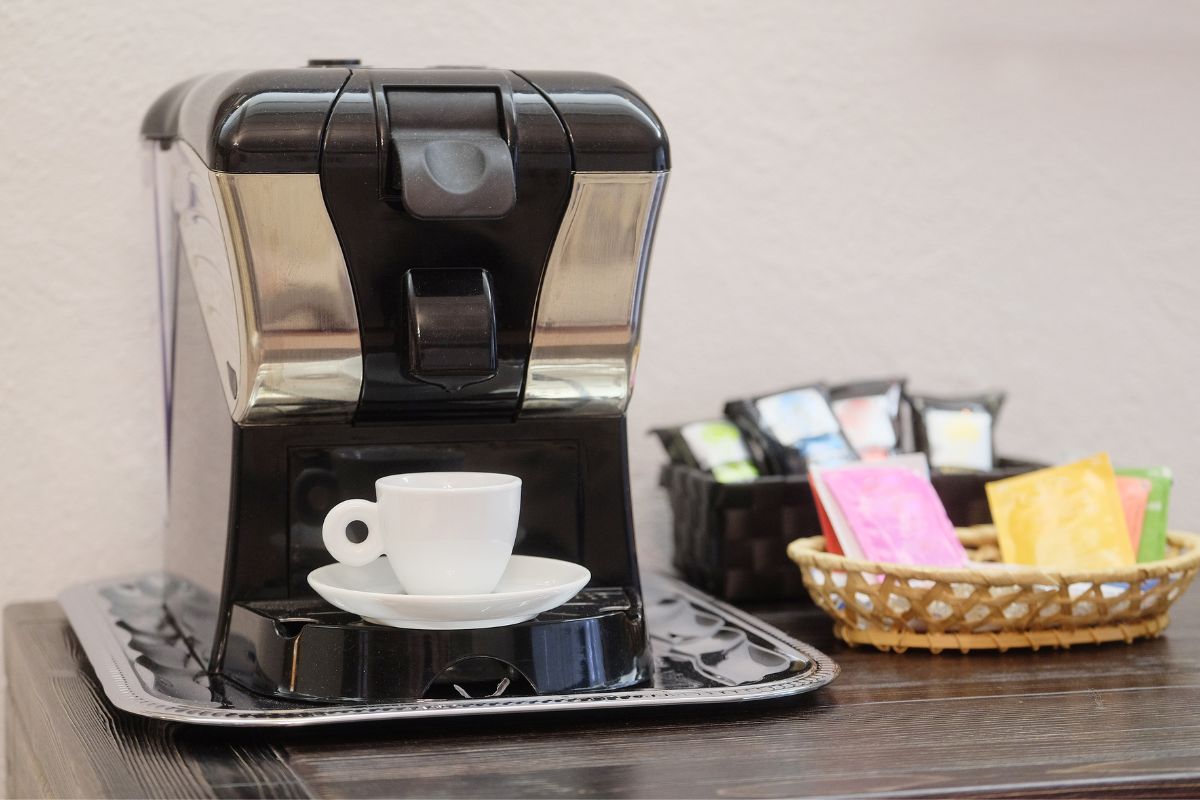
That’s All, Folks
Even though it may be painful to pay for one, the cost of an espresso machine is understandable given the high-quality components, low demand, significant research, and branding that go into its manufacture. Despite this, an espresso machine’s price might be considerably pricey.
Just keep in mind that you do not necessarily need to get the most expensive item that is currently on the market. You may purchase a fantastic espresso machine that brews delicious coffee and has a long lifespan for close to or slightly less than around $500. If you have this kind of budget, you should buy one.
